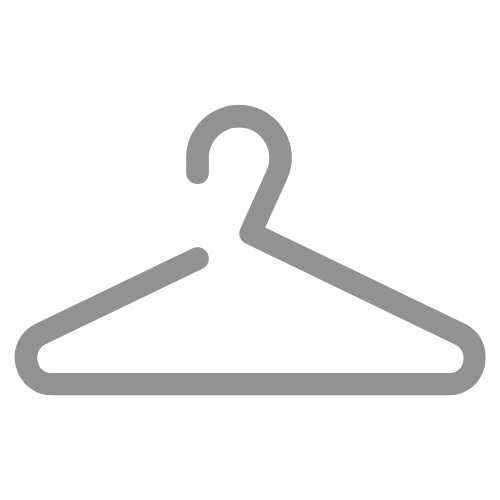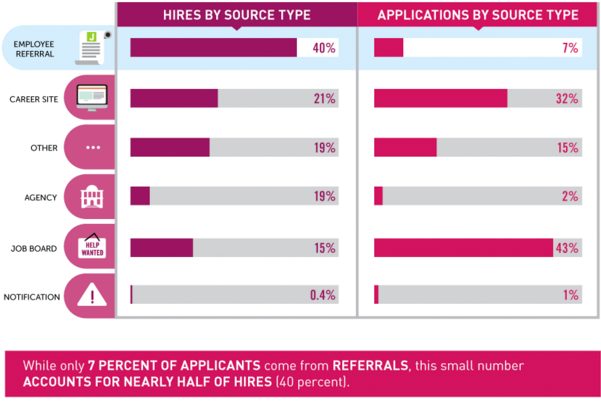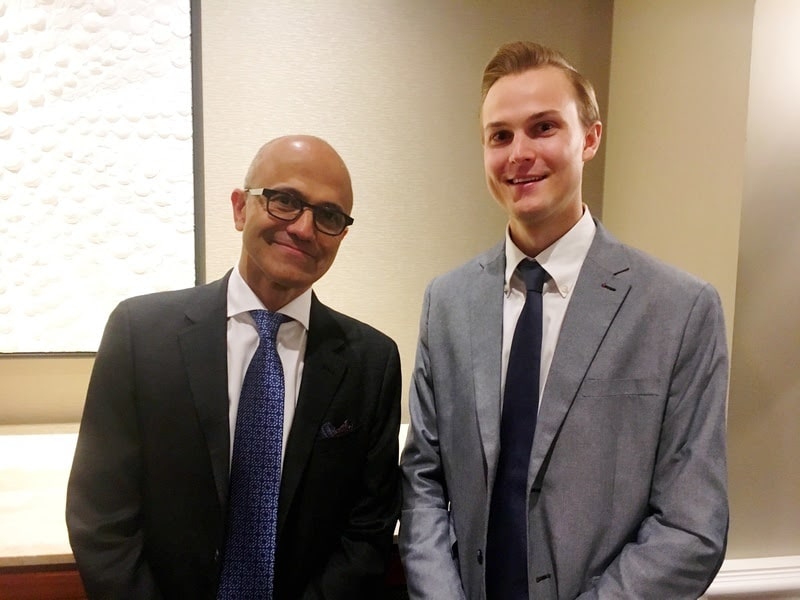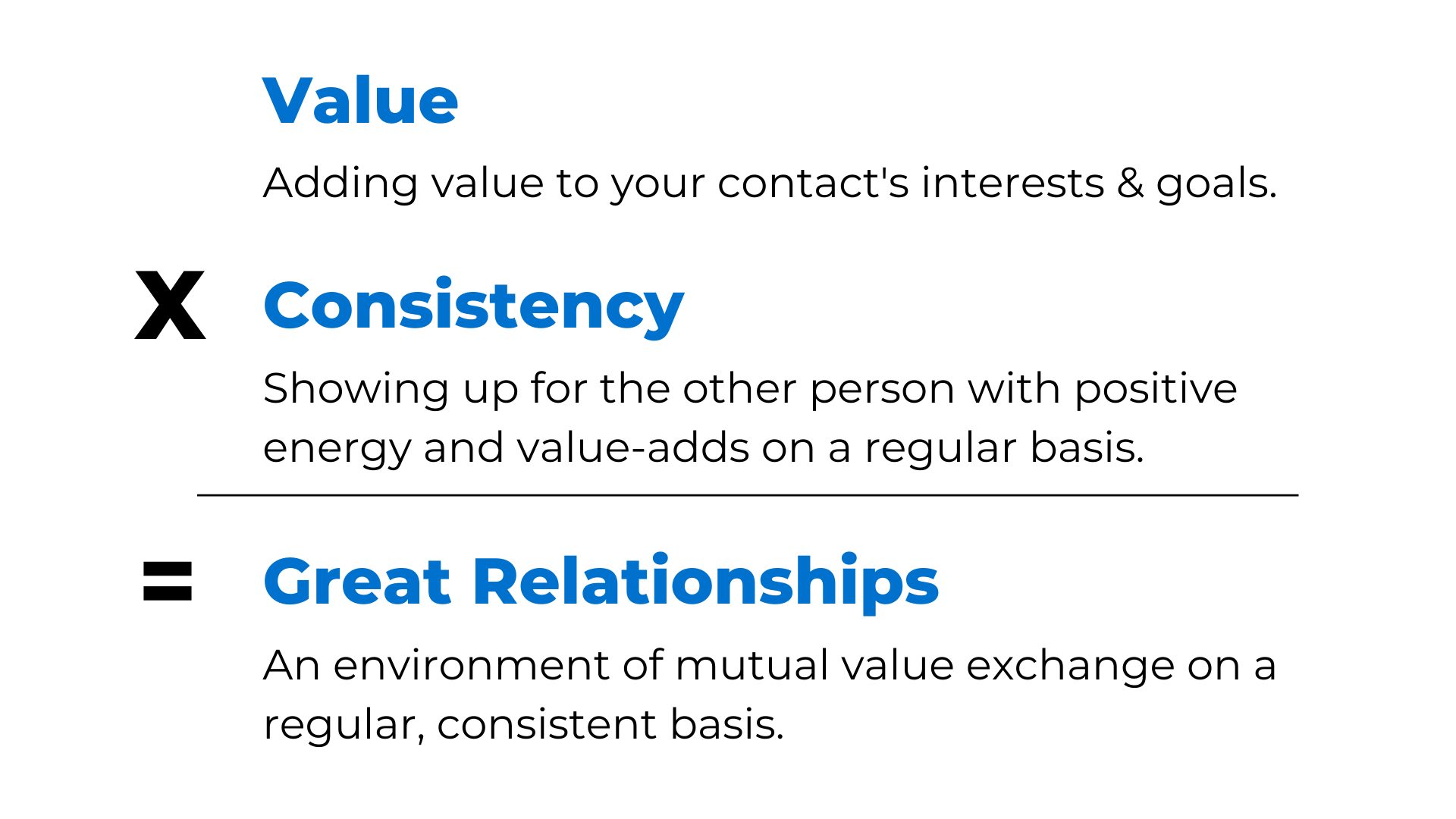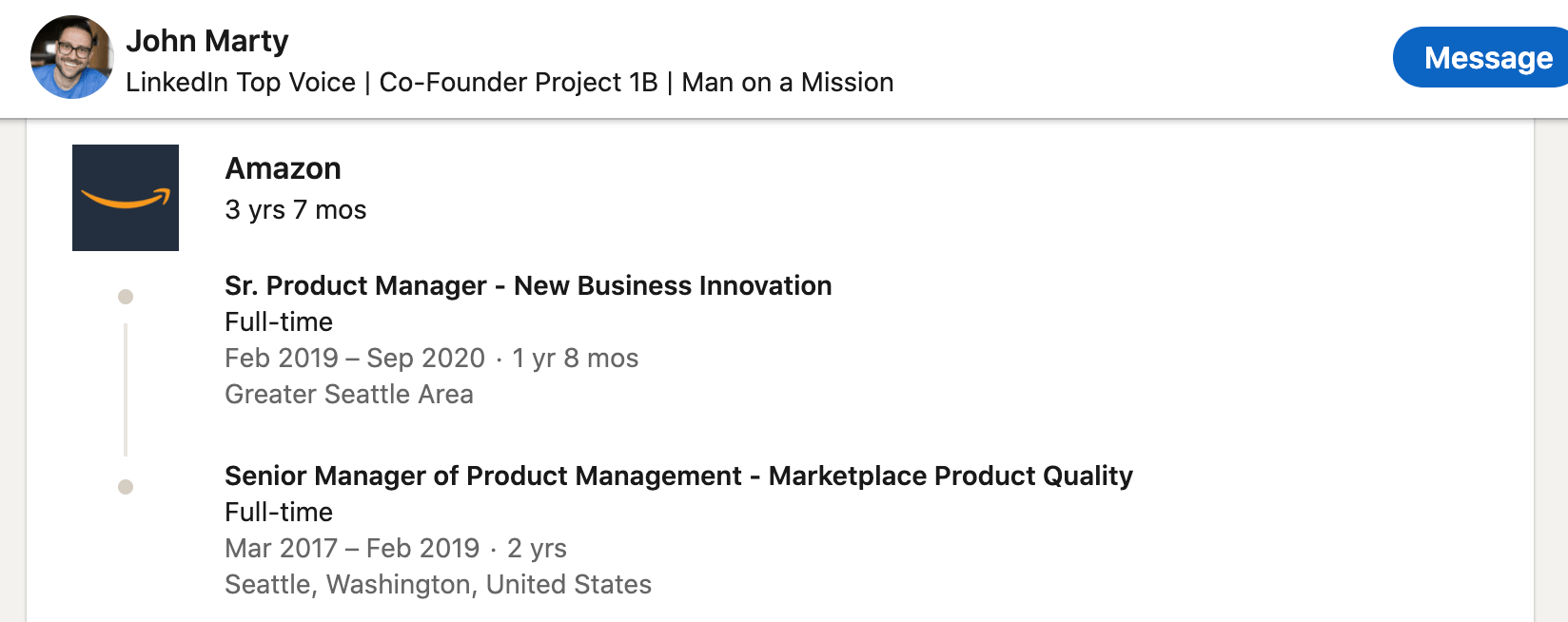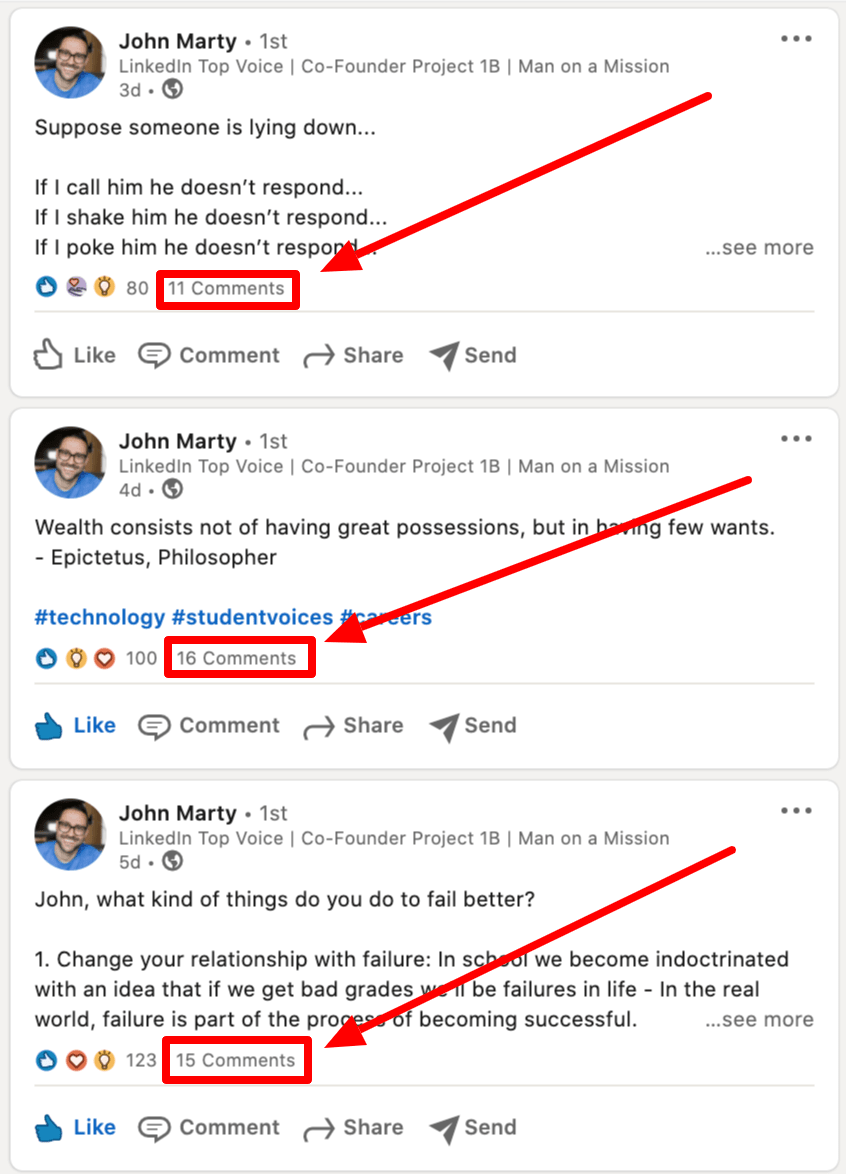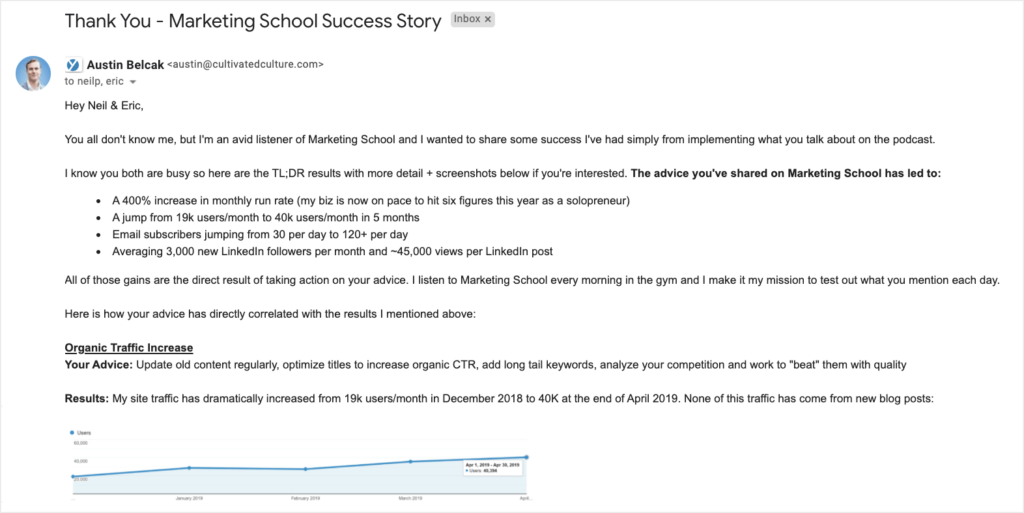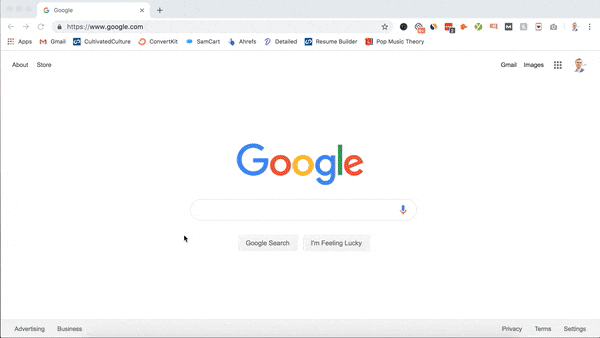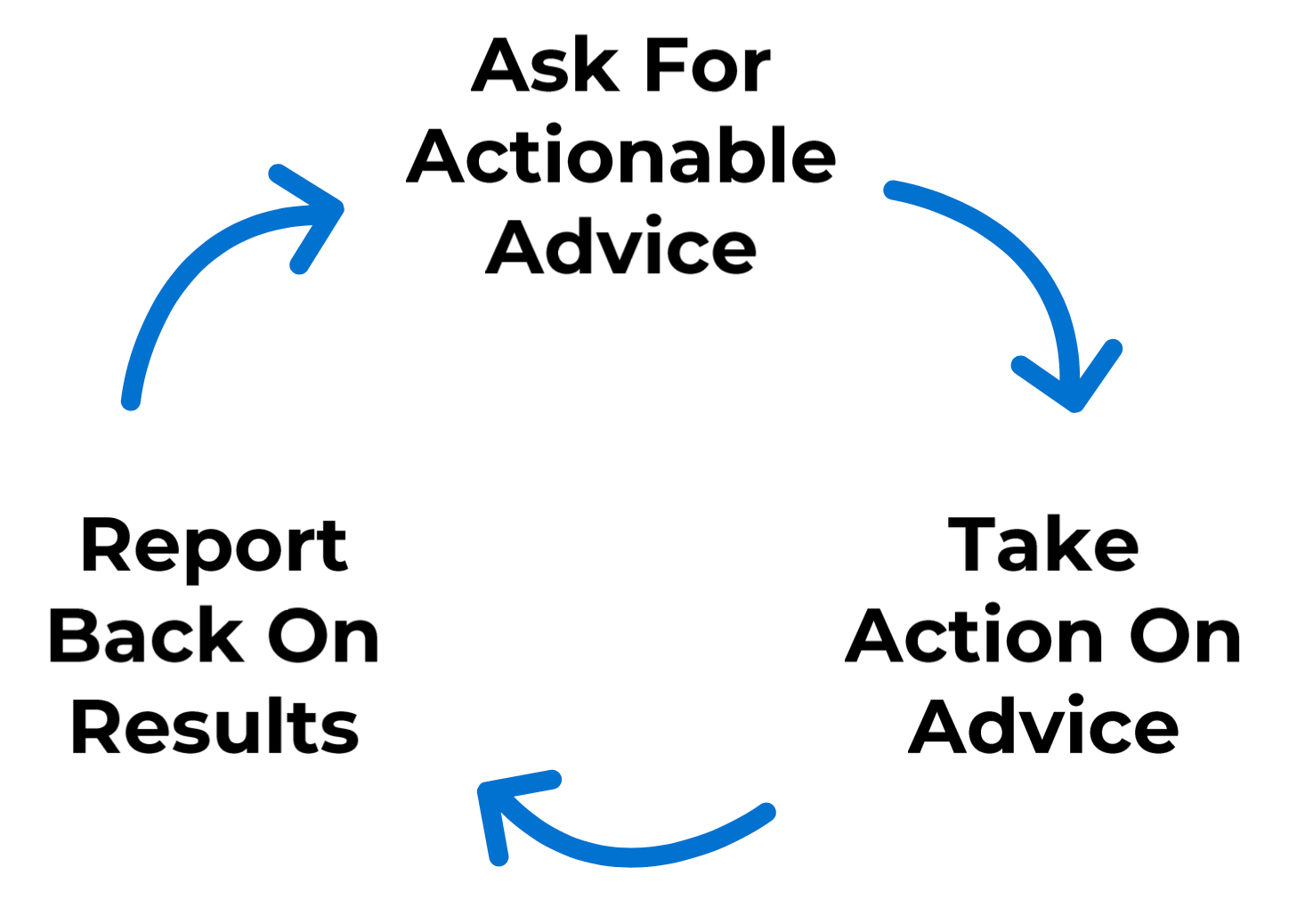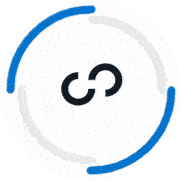“Your network is your net worth.”
We've all heard the cliché before. When I was starting my career, that phrase frustrated the hell out of me. Why?
Because everyone and their cousin was telling me how important networking was, but nobody was actually showing me how to network effectively.
I felt like screaming, “We get it! We need to build relationships! Crystal clear. Now can you quit telling me what I need to do and actually show me how to do it?”
The message was clear, but the steps were not. That's exactly why I created this guide.
I'm going to share the system I used when I taught myself how to network. Strategies that helped me land interviews and offers at Microsoft, Google, and Twitter through connections I'd built with people I'd never met before.
Tactics I used to get face time with people like Satya Nadella, Arianna Huffington, and more. We're going to deep dive into:
- Why learning how to network is so important
- Who to network with (fun fact: you won't ever have to go to a networking meet up again!)
- The secret to starting meaningful relationships that get results
- 4+ proven strategies that helped me connect with anyone I wanted to meet
If you're ready to learn how to network the right way, with real strategies that actually get results, read on!
What Is Networking And Why Is It Important?
Put simply, networking is the process of building authentic relationships with others.
It tends to be viewed in a professional sense, but in no way is it limited to the professional world. After all, we consider many of our friends to be in our network, don't we?
Now, you've probably heard the term “your network is your net worth” before. It might seem like a cliché, but it has stuck around for a reason! It's the truth.
Relationships are the accelerant behind many of the success stories you read about and see in your own personal life. The entrepreneur who made it big, the person at work who is constantly winning those promotions, etc.
On the career side of things, the data tells us that referrals (a.k.a. jobs won through relationships) make up the vast majority of hires. Some estimates, like this one from the Wall Street Journal, note that 80% of hires come from referrals. On the lower end, Jobvite has the figure at 40%:
Either way, if you want to land a job, referrals are the way to do it and referrals are created from your network.
When I was job searching, I didn't apply for roles online. Instead, I focused on networking with people who could influence my ability to get hired at the companies I wanted to work at. The result?
Interviews and offers from Google, Microsoft, and Twitter along with a massive bump in compensation and salary!
Once you have the job, not much changes. Who you know can win out when it comes to gaining visibility and landing promotions.
In my 5 years at Microsoft, I was promoted three times and won our Platinum Club award for attainment, (which is only given to the top 1% of salespeople at the company). How did I make all of that happen?
I identified and networked with the highest performing people in my organization at every level. Those relationships were key factors in my success and my promotions. They also helped me score a chance to hang out with this guy, Microsoft's CEO Satya Nadella:
And when you're ready to start your own thing? Relationships are still the key to success.
Maybe you need a technical co-founder to build an app, an investor for a seed round, a mentor for advice, or a connection for some good PR. All of those are easily solved with relationships.
When I started this website, I wanted a way to drive more traffic. I figured that writing for major publications would help, so I networked with the people who ran those publications, like Arianna Huffington. Here's an email from her inviting me to write for Thrive Global, her new venture at the time:
Now, I'm not sharing all of these examples to brag. I'm sharing them to show you that, when it comes to learning how to network, I know what the heck I'm talking about. I'm also sharing them to show you what's possible when you implement the strategies we'll be talking about in the article.
Before this article, you may have seen people like Satya Nadella or Arianna Huffington as unreachable people.
After reading it, you'll have the tools you need to create your own success story and people will be coming to you to learn how to network!
Who Should You Network With?
Before jumping into specific strategies, it's important to get clear on exactly who we should be networking with.
If you're not specific with your energy and your actions, you're going to wind up wasting a lot of time without getting the results you want. This is where I see people make a big mistake.
Instead of getting intentional, most people go for what they're told to do. “Go to a career fair,” “go to a Meetup,” “here's this industry event!”
The problem with these types of events is that they're full of people who are all looking for the same thing, but none of the people who can help deliver on that need. For example, networking mixers are typically full of people who are looking for a job but you won't find many hiring managers there.
You're also leaving a lot up to chance. You're essentially hoping that someone who can make an impact on your goals is at one of these places and that you coincidentally cross paths with them.
Unfortunately, hope is not a good networking strategy.
Instead of shaking hands and handing out business cards to as many people as we can, we want to get laser focused on the handful of people who can really impact our careers and our lives. The people who can have direct influence over what we want and need.
If you want a job as a software engineer at Google, go find people who manage teams of software engineers at Google.
If you want a promotion into X role and Y level, go find the person in charge of making the decisions on who to promote.
If you want to be featured in a major publication like Forbes or Business Insider, go find people who can have the final say on getting your interview published.
This is a quality over quantity approach, and it may be a little scary at first. Putting all of your eggs into a smaller basket can feel that way.
But when we focus all of our efforts on a few people who can really make an impact, that's where we start to see results.
Your Networking Mantra: You should only be focused on the people who can have direct influence over the end goal you are trying to achieve.
To Start A Great Relationship, Make It About Them
One of the biggest mistakes people make when they network is leading with a direct, self-centered ask.
I call this a “Me Mindset” and it happens when you message a hiring manager, potential referral, or other contact and say things like:
- “Can you take a look at my resume and give me some advice?”
- “I saw you work at [Company] and my goal is to work there too, can you pass my resume along?”
- “Can you introduce me to X person?”
When you're networking, you're likely connecting with people that you don't have a preexisting relationship with. This person is a virtual stranger.
When you lead with a “Me Mindset” message, you're essentially saying, “Hi, we've never met before, but I was hoping you could speak to your manager and vouch for the fact that I'm worth tens, if not hundreds, of thousands of dollars and my work will exceed expectations.”
You probably don't mean for it to come off that way, but that's how it's being viewed by the person who's receiving your email. And their answer? It's likely going to be a pass.
Networking Is Like Managing A Bank Account
Building relationships the right way is a lot like something you probably do on a regular basis –managing your bank account.
When we network, we usually have an ask in mind. We want an introduction, we want someone to pass our resume along, we want to book a demo, etc.
Let's say that ask costs you “$20 Social Dollars.”
If you try to make that ask without having any money in the bank, you're going to overdraw your account. That usually comes with consequences like overdraft fees, etc. In networking terms, those consequences are you not receiving a response or, even worse, rubbing the other person the wrong way.
But let's say that you wait on the ask, delaying your gratification. Instead, you focus on making deposits up front in the form of adding value to the other person. You mention a career transition they made, an article they wrote, you leave a comment on their post, or you introduce them to someone who can help them.
Each of those actions is a $4-$5 deposit into your social bank account. After four or five deposits, you're at a point where making that $20 withdrawal feels normal and comfortable. In fact, the other person is going to be a lot more likely to help because of the Rule of Reciprocity!
How Do You Add Value?
In the context of networking, value tends to seem abstract or out of reach. A lot of people I talk to tell me they “don't know what they could offer,” or they think that value needs to be some sort of transformational business opportunity.
That's not true!
Value comes in many shapes and sizes and the strongest relationships are usually built in small, consistent layers of value vs. one giant value bomb. That's what The Value Equation is all about:
Here are a few examples of value that most people tend to overlook:
- Recognizing someone for something they've done (a transition they made, an article they wrote)
- Sharing the success you've seen from taking their advice
- Identifying common ground or values (this is why alumni connections work so well)
- Helping the other person achieve a goal
- Finding a way to make the other person's life easier
If you want to discover these angles, you need to do your research. You want to learn everything you can about the person you're connecting with.
Scan their LinkedIn profile, run a Google search of their name, comb through other social profiles, look for articles they've written, personal websites, portfolios, etc. Then try to identify an angle you can use to make your outreach about them.
How To Network Effectively: 4+ Tips To Help You Succeed
It's easy for me to sit here and just say “make it about them,” but that doesn't provide a ton of clarity on how you should execute these ideas.
When I was a starting my career, I always got frustrated by the fact that everyone and their cousin would tell me I needed to learn how to network, but no one would show me how to go out and do it.
That changes now! Here are 4 networking tips that are highly actionable and easy to implement so you can get started on this today:
Networking Tip #1: Recognize A Career Event
One of the easiest ways to make your outreach about the other person is to comment on something that's happened in their career.
This could be a transition to a new industry, the fact that this person worked at a company that you used to (or currently) work at, or a project this person is working on that you're aware of based on your research. Showing them you did your research and positioning them as the expert goes a long way!
For example, let's say you want to work in advertising at Microsoft and you come across my LinkedIn profile. You see that I made the transition from the healthcare industry into digital marketing so you decide to lead with that. Here's an email you might write:
Networking Email Template: Career Changes
Subject: Your transition from healthcare
Hi Austin,
I hope you're having a great week! My name is [Your Name] and I found your LinkedIn profile while I was looking for people who made the transition into tech from a non-traditional background. Your experience moving from healthcare to Microsoft was really impressive.
I know this is a big ask coming from a stranger, but I'd be incredibly grateful for the chance to ask you a few questions about that transition. It could be over the phone or via email, whatever is easy for you.
Again, I know this is a big ask coming from a stranger so I totally understand if you don't have time. Either way, I'm wishing you the best and hope you have a great week!
Best,
[Your Name]
Boom! See how we made that email about me? We mentioned the transition showing that we did our research and we acknowledged that this was a big ask in a cold email, taking the pressure off.
That kind of email goes a long way and will help boost your response rates as you're learning how to network.
Networking Tip #2: Warm Them Up On Social Media
We've talked about “making it about them” and “adding value.” One of the easiest ways to kick off a relationship this way is by supporting your contact on social media!
Now, not every person is going to be active on social media, so expect that up front. But if your contact is someone who is professionally active on a site like LinkedIn or Twitter, then you can leverage that to your advantage!
By way of example, let's say you want a Product Manager role at Amazon and you come across John Marty's profile:
If you look through John's activity, you can see he posts quite a bit. Looking at his posts, I see that they get hundreds of reactions, but far fewer comments. This is a big opportunity!
If I take the time to read through John's post and leave a thoughtful comment, I can really stand out!
Now, I bolded thoughtful for a reason. Comments like “great tips” or “love this” are positive, but they don't usually stand out.
Instead, I'm going to read John's post and use an improv technique called “Yes, And” which essentially means that you support the post with your “yes” and then you build onto it with your “and” (you can learn more about that here).
For example, John's last post is about “failing better.” You could plus one this idea and then add your own personal anecdote or story in a comment! This adds value and a new perspective to the conversation which will do two things:
- It will get you on John's radar in a positive way
- It will likely attract the attention of other people viewing the post who will like your comment or reply to it
Now you can rinse and repeat a few times each week. Every time you leave that thoughtful, positive comment on John's post, you add a layer to your relationship. After doing this for a few weeks, you can safely make an ask for a longer conversation knowing that you won't be viewed as a total stranger, but as someone who's supported John's posts for several weeks.
That's a great place to have an initial conversation and it'll boost your chances of getting a yes!
Pro Tip: If you want to find people at your target companies who are active, head to LinkedIn and run a search for your target job title. Next, click “Content” from the sub tab menu. Finally, go to “All Filters” and add your target companies to the “Add Author's Company” filter.
Networking Tip #3: Use The “Poster Boy Formula”
The “Poster Boy” formula is a tactic I picked up from Bryan Harris. I absolutely love it because it plays into a major psychological predisposition that we have as people — we want to feel valued.
The “Poster Boy” formula is incredibly simple and it's especially effective with people who are harder to reach because of their audience or their status. Regardless of someone's “influencer status,” people are always looking for and appreciating testimonials. If you can be their Poster Boy/Girl/Person, you can fast track your way onto their radar. Here's how it works:
First, identify an idea or a strategy that this person has shared. It could be something they posted on LinkedIn, something they shared in an article, on a podcast, etc.
Next, go take action on that strategy and work until you get results. Results are absolutely critical here because that is what's going to make you stand out!
Then, when you have those results, send an email to that person sharing a full breakdown of the advice you took and the results you got.
I used this exact strategy to get in touch with Neil Patel and Eric Siu. If you're not familiar with them, they run a podcast called Marketing School that's seen over 30 million downloads.
Back in 2019, I'd been listening to their episodes and applying their advice for 6+ months. I'd been working to get the results I could use to stand out. I compiled all of my results into an email and sent it off. Here's a snippet from that note:
The result? A reply from the guys that said, “they love to see action like this” and a request to feature my story as a case study. Seriously, they asked me if it would be ok to feature me on their site. Check it out:
A few months later, I was hopping on a 30 minute Zoom call with Eric to share feedback on a new tool he was launching.
The Poster Boy formula is super effective because people, especially mentors, want to invest in other people who they see potential in. By taking action and getting results, you're proving that you're somebody worth investing in.
Networking Tip #4: Leverage The “Advice Triangle”
When it comes to networking, many people struggle with starting the conversation, but it's even harder to know what to say after the first interaction. That's where the Advice Triangle comes into play.
The Advice Triangle is a strategy that will help you get in the door with almost anyone and it will help you continue the conversation as you build the relationship:
The Advice Triangle is a 3 step framework that you can leverage to start a relationship, during a conversation with a connection, or as a follow up. Here's how it works:
- Ask your contact for specific, actionable advice (give them two options to choose from)
- Go take action on that advice and get results / take note of learnings
- Follow up with your contact sharing that you took action on their advice, share your results / learnings, and then ask for more advice
This creates a cycle. You ask for advice, you take action, and then you ask for more advice!
The reason this works so well is because of the benefits you get with that follow up. When you show someone the results of taking their advice, they realize a few things.
First, they feel valued because someone actually took their advice. Second, you illustrate that you're the type of person to roll up your sleeves and take action. That means the next piece of advice is likely going to be deeper, better than the first piece.
You're building the relationship with each follow up!
Key Takeaways For Learning How To Network
There you have it! I hope this guide provided an actionable foundation for you to build off of as you start learning how to network the right way.
To be clear, this guide barely scratches the surface. Networking is more of an art than a science, and the best relationship builders are constantly experimenting and testing with ways to better connect with more people.
In summary, here's what I want you to remember as you embark on your networking journey:
- Always make your initial message about the person you're trying to connect with
- Add as much value as you possibly can up front – the more you add, the more you'll get in return
- Relationships are a game of small, consistent layers – they're not formed overnight
If you remember those guidelines as you work to connect with people who can elevate your game and change your life, you'll become a networking master in no time!















